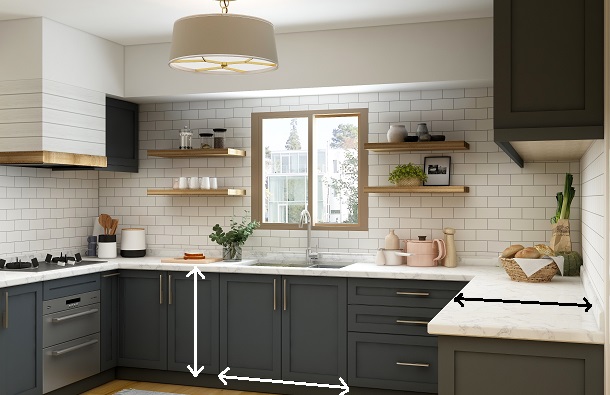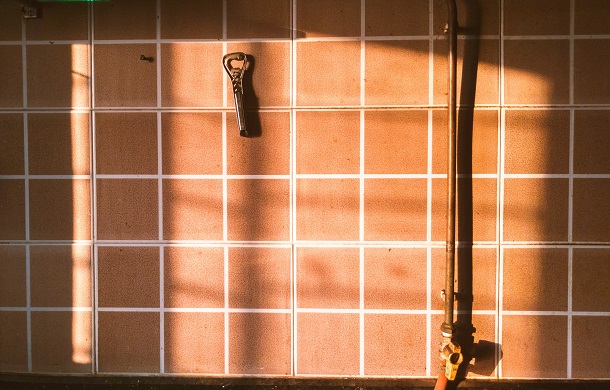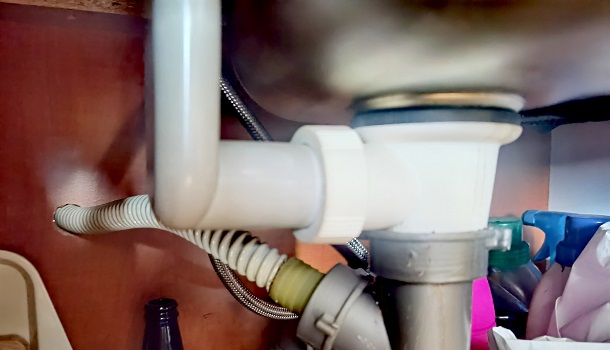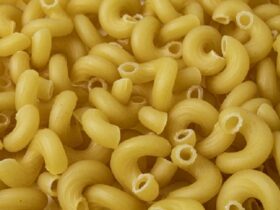Built-in dishwashers look elegant and are highly practical in homes where they’re put under the kitchen sink.
Even though it looks professional, it doesn’t necessarily require one to do it. As each kitchen situation is somewhat unique, you simply can’t settle on one solution for all adding a dishwasher to existing cabinets-related issues. Here’s what you should keep in mind before taking on such a task.
IN THIS ARTICLE:
Can you Install A Dishwasher In An Existing Kitchen?
You certainly can and there are so many methods to do so meaning that you’ll easily find a solution to your specific problem of installment. Let’s say you want to install it away from your sink or in a small kitchen, or perhaps even between cabinets with no countertop.
How Much Does It Cost?
You can always refer to a professional to do the job for you if you’re not feeling like a handyman yourself. Be aware that these visits can cost anywhere between 270-1380 dollars although the national average is somewhere around 970 dollars.


Requirements For Installing
Space
You’ll have to pick a cabinet box to sacrifice and disassemble it so that it can fit your dishwasher. Make sure you measure out the inside of the cabinet space and the dishwasher to ensure it’ll fit.
Cabinets
- Height (excluding countertop) = 34.5”
- Height (with countertop) = 35” – 36”
- Depth (wall to front) = 24”
- Depth (with countertop) = 25” – 26”
- Width = 48”, 36”, 33”, 30”, 24” 18”, 12”
Built-In Dishwasher
- Width = 24”
- Depth = 24”
- Height = 35”
Note: Oversized built-in dishwashers can be wider, ranging anywhere from 30”-42”
Size
Although you don’t have to worry about width and depth as much, you’ll surely have to think about height. The reason for it is that countertops are connected to the top as a whole and can’t be cut to adjust their height unless you want to end up with an ugly bulge on top. Ensuring that the height is proper keeps remodeling to a minimum as well. Also, keep in mind that kitchens are made in a standard size as well as dishwashers be sure to measure out your cabinets and dishwasher before attempting to install it.


Water Supply Line
Dishwashers don’t work without a drain and water supply line so this will also determine where it’s going to be. You can, however, get away with installing a new drain and water supply line by connecting it to the existing sink lines. This is why it’s recommended to place the dishwasher to the left or right of your sink but also for convenience’s sake.


Cables
Smaller and portable dishwashers can be plugged into an electrical outlet to work but built-in models require their circuit breaker. This means that you’ll have to run a cable from the breaker box to where your dishwasher is located.
Install A Dishwasher In Existing Cabinets
In order to do everything yourself you’ll have to learn a few things:
- Measure Cabinet Boxes For Dishwasher
- Cut And Trim Kitchen Cabinets
- Do The Electrical Wiring Of The Dishwasher
- Connect The Supply And Drain Line
How To Choose And Measure Cabinet Boxes For Dishwasher?
Choosing the cabinet for your dishwasher should be easy. You’ll want to try and install it to the left or right of the sink or you can even purchase an under sink dishwasher for practical purposes and so that you don’t have to do a whole lot of remodeling. If the dishwasher doesn’t fit in the cabinets close to your sink, try and find a slim dishwasher.
- Measure the width, depth, and height of the cabinet box
- For the width, measure from the cabinet wall to another, first in the back and then in the front (if measuring are different, go with the smaller one)
- Repeat for depth making sure to measure along the edges of the other cabinet side wall on both sides
- Repeat for the height, first measure in the back and then in the front
If you’ve concluded that your dishwasher is too big for the cabinet space try to look for another one, you’ll have to cut the cabinets once you’ve found your fit
How To Cut Kitchen Cabinets?
- Remove doors, hinges and shelve using a screwdriver and pulling the shelves out
- If the shelves don’t slide out, cut them in half with a saw and pull the two pieces out, then unscrew the cleats holding them to remove those as well
- What is likely is that your kitchen cabinet has a base. You’ll want to remove it by cutting it in half down the center to remove it
- The front of the cabinet likely has some planks on the sides and on top. You can see them, making sure not to cut the cabinet side walls and remove them. Another scenario that is likely to happen is that they’re glued or screwed in.
- With glued cabinets, sever the connection with a knife and rip while with screwed in panels, just unscrew them and remove.
Cut Holes In Cabinets
The reason why you’ll want to make a hole in the kitchen cabinet is that you’ll likely have to pull the drain and water hose through that will lead to the sink. More away from the sink your dishwasher is, more holes you’ll have to make.
- Remove all items from the cabinet so that it’s easier to work with
- You’ll want to make two holes. Both in the back, one on the bottom (water hose) and one on top (drain hose)
- Grab a hole saw or a spade bit if you have one and make the holes. you’ll want to make a larger hole for the drain line to fit in
How To Do The Electrical Wiring Of The Dishwasher?
- Turn the dishwasher gently on its back and remove the panel that is usually located on the bottom
- You’ll notice a box there, unscrew it to reveal the 3 wires
- Take the plug-in cable that you received and reveal the 3 wires in it
- Take a knife and reveal some of the copper wire on the cable
- Start twisting the copper wire ends together, making sure to match the colors
- Place a cap on each one after you’re done twisting them.
- Put the wires back in the box, screw the cover back on
How To Connect The Supply And Drain Line?
The drain line is likely to already be connected but not the same can be said about the water line.
- With the dishwasher laying on its back, find a plastic hole that is used as the water line
- Get a 90-degree elbow connector and screw it in the hole making sure it’s facing down
- Take your hose and clamp, put the clamp on the hose and place the hose on the end of the connector
- Screw in the clamp nice and tight trying to make sure it’s not too tight as it is plastic after all
Connecting the hose in the sink
- Pull both the water hose and drain hose through the holes you made, fit the dishwasher inside and lead them to the sink bottom
- Locate either the garbage disposal or the sink pipes, find a hole and get a drain clamp
- Place the clamp on the drain hose, connect it to the hole, and screw in the clamp, making sure it’s nice and tight


For The Water Hose Do The Following
- Locate the water valve
- Place the water hose on it and screw in with your hand. Later, tighten with pliers
- Turn on the water line and you’re done
Note: We strongly recommend installing an air gap to keep drain clogs to a minimum in the future
Tips For Installment In Various Kitchen Situations
How Do I Get A Dishwasher In My Small Kitchen?
Here are some tips to make installing it in a small kitchen easy
- Try and measure your cabinets prior, once looking for a dishwasher, check the measurements to see where it’ll fit
- Make sure you’re choosing a slimline dishwasher
- Choose a location closer to the sink to prevent having to drill too many holes through cabinets


Installing A Dishwasher With Cabinets Away From The Sink
Although impractical, many will have to settle on this option.
- Make sure to buy longer water and drain line hoses or buy more and connect them with a coupler
- Make sure the drain hose isn’t loose but instead nice and straight when leading to the garbage disposal or directly to the drain
Installing A Dishwasher Too Wide For Cabinet
- Instead of doing a whole remodel, empty out two cabinets and sever the side panels where they meet
- When you cut the panels where they meet, you can use the panels to create another panel
Installing A Countertop/Portable Dishwasher
Unfortunately, countertop dishwashers should only be used as directed in the instructions provided. You should never install it in an existing cupboard unless it’s stated otherwise in the instructions manual. It’s a slightly different story from portable ones. They, too, have standard sizes and as we concluded, they’re important to know before starting to work on installment.
Portable Dishwasher
- Width = 24”
- Depth = 21”
- Height = 34”
Countertop Dishwasher
- Width = 22”
- Depth = 20”
- Height = 17”
Note: Dishwashers are measured to fit the size of standard-sized cabinets. That’s why they all have a rough opening meaning that they’re close to the above measurements.
To Wrap It Up
Installing a dishwasher in your cupboards and cabinets might seem hard at first but if you know the basics and learn about how exactly certain things should be done, it’s easy to do on your own even if you have no prior knowledge. Still, if you’re unsure, you can always rely on a professional to install it, even though you’ll have to pay for it.


















Leave a Reply